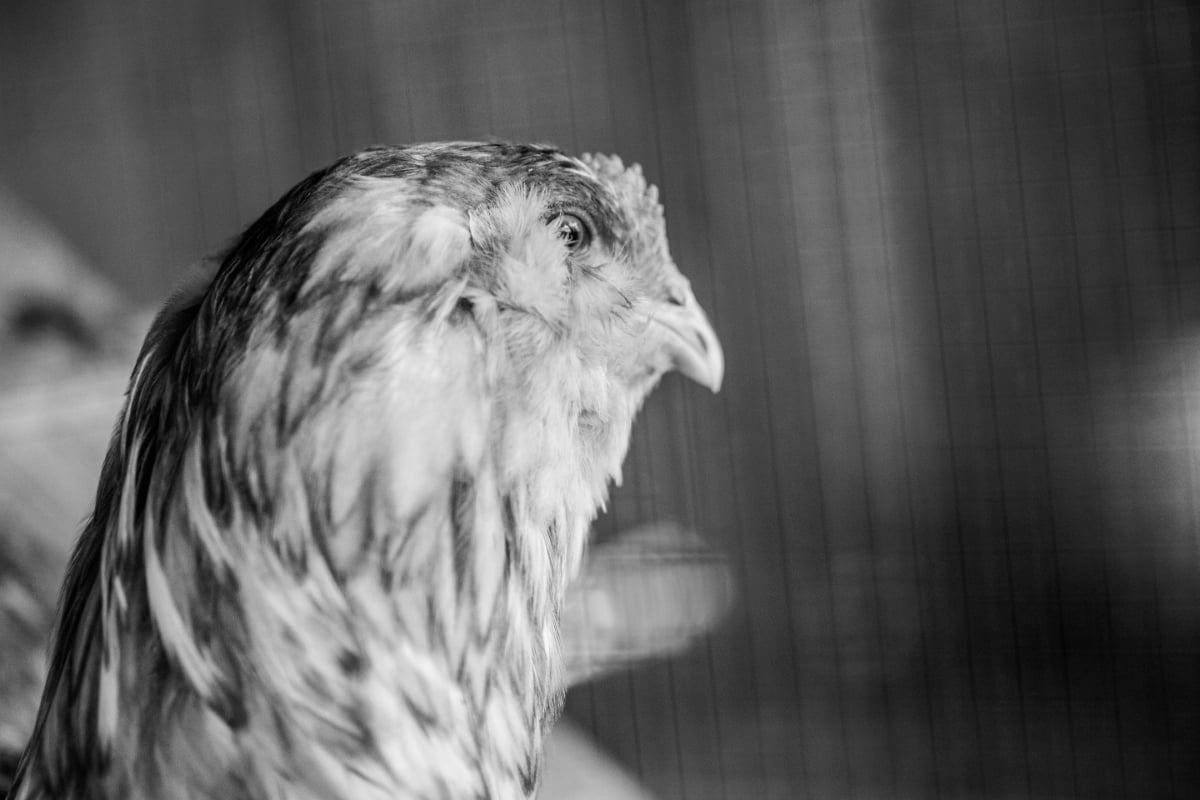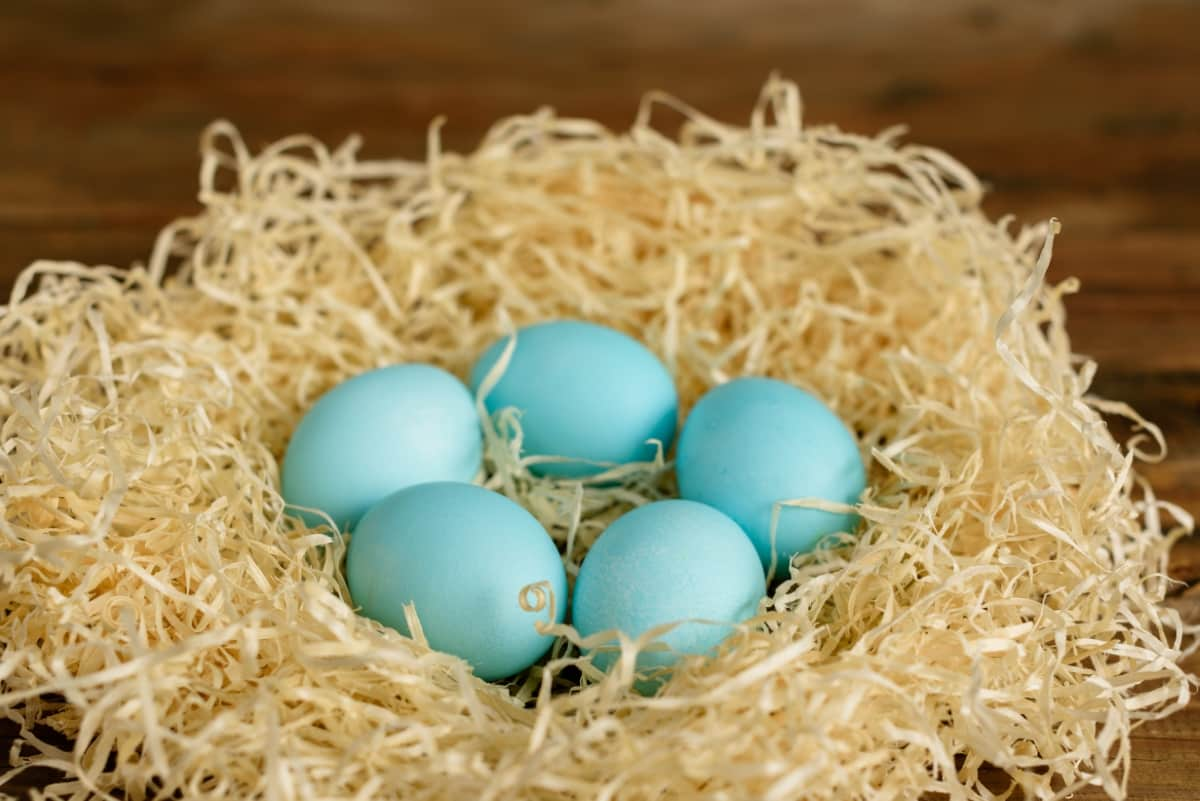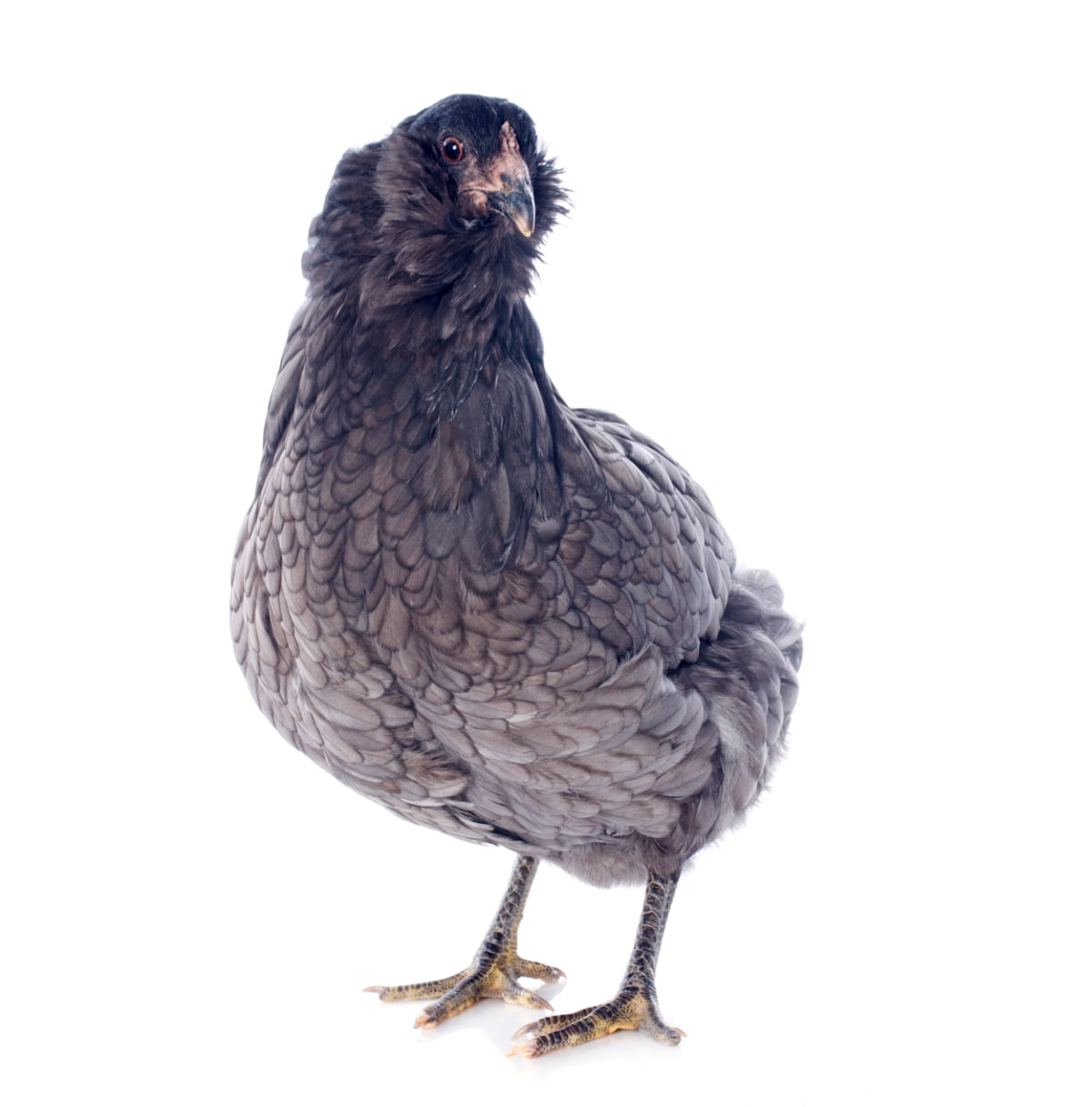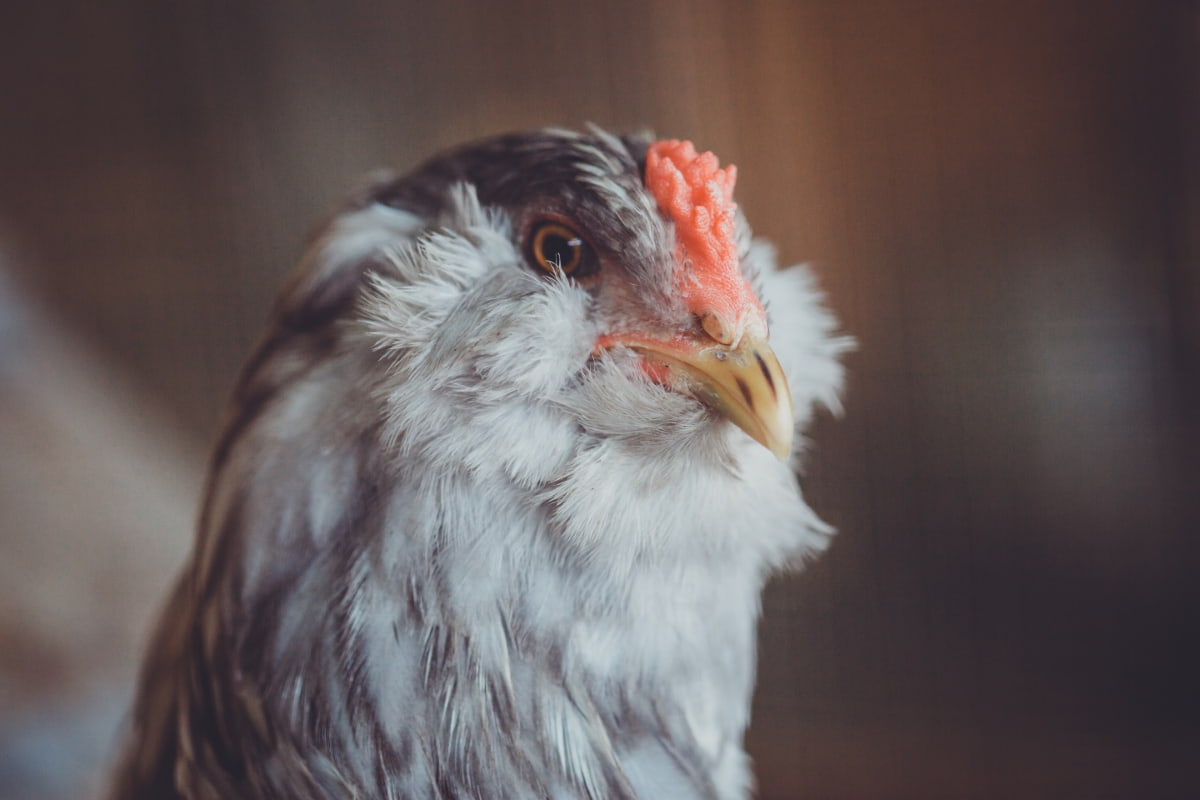Welcome to our comprehensive guide on unlocking the potential of your flock through the art of raising Easter Egger chickens. In this blog we will cover every aspect of Easter Egger chicken care, from understanding their unique breeds and colors to optimizing their coop, feeding, and health. Discover the secrets behind Easter Egger chicken temperament, behavior, and traits, as well as expert tips on breeding, nesting, and managing your flock for optimal egg production.

Raising Easter Egger Chickens
Introduction to Easter Egger Chickens
Easter Egger chickens not a true breed but a hybrid of various chickens that carry the blue egg gene. They are popular among backyard chicken keepers for their colorful eggs, friendly personalities, and low-maintenance lifestyles.
What are Easter Egger Chickens?
Easter Egger chickens are the result of crossing Araucana or Ameraucana chickens with other breeds. Both breeds originated from South America and have the dominant gene for laying blue eggs. When they are bred with other chickens that lay brown eggs, the offspring can lay eggs in various shades of green, olive, or even pink. Easter Egger chickens can also inherit different feather colors and patterns from their parents, making them a diverse and unique group of chickens.
The Appeal of Easter Egger Chickens
- Colorful eggs may brighten your egg basket and make every day Easter.
- Friendly, curious, and gentle, they get along with other hens and people.
- They can survive in many climates.
- They have no unique health demands and are simple to care for.
- They are excellent layers that deposit 200+ eggs every year.
The Lifespan of Easter Egger Chickens
Easter Egger chickens can live for 5 to 8 years on average, based on their health, diet, and living conditions. Some may live longer or shorter than others, depending on their genetics and luck.
Price of Easter Egger Chicken
Easter Egger chickens are relatively inexpensive to buy, as they are not a purebred or rare breed. You can expect to pay around $4 to $5 per chick from a hatchery or a breeder. However, the price may vary depending on the location, season, and availability of the birds.
In case you missed it: Ultimate Guide to Raising Dominique Chickens: Breeding, Feeding, Egg-Production, and Care

Understanding Easter Egger Chickens
Genetic Background and Variability
Easter Egger chickens have no breed standard or uniform traits. They are a mixed breed with varied looks, personalities, and egg colors. Their parents, who might be Araucana, Ameraucana, or other breeds, give them varied qualities. The blue egg gene (oocyanin) is the most significant Easter Egger gene. This gene dominates the brown egg gene. Therefore, a chicken with one copy of the blue egg gene would produce blue eggs. Two copies of the brown egg gene make a chicken lay brown eggs.
The blue egg gene may interact with other eggshell color genes, such as the brown-pigmented protoporphyrin gene. A blue egg gene with a protoporphyrin gene produces a green or olive egg. When blue egg genes are coupled with shell hue or intensity genes, pink or cream eggs might arise. Easter Egger chicks vary beyond egg color. Black, white, red, buff, silver, gold, barred, laced, or speckled feathers are also possible. They may also have pea, single, rose, or walnut combs. They may also have muffs, beards, ear tufts, or crests.
Recognizing Easter Egger Chickens
Genetic diversity makes it impossible to discern whether a bird is an Easter Egger. Their egg color is the most evident sign. A chicken that produces blue, green, olive, pink, or cream eggs is likely an Easter Egger. The second indication is feather color and pattern. A bird with numerous feather colors or patterns is likely an Easter Egger. Comb type is the third clue.
A pea-combed fowl is probably an Easter Egger. A bird with one comb is unlikely an Easter Egger. A rose, walnut, or other comb-type chicken may be an Easter Egger or another breed. The fourth clue is their face. A bird with muffs, a beard, ear tufts, or a crest is likely an Easter Egger, while a chicken without these traits may be an Easter Egger or another breed.
Choosing Your Easter Egger Chickens
Hatcheries: Commercial businesses that produce large numbers of chicks for sale, offering a wide selection of breeds and varieties, including Easter eggs. However, they may not guarantee the quality, health, or sex of the chicks and may ship them by mail, which can be stressful for the birds.
Breeders: Individuals or small businesses with more knowledge and experience in raising and selling chickens, often offering higher quality and healthier chicks. However, they may have a limited selection of breeds and varieties and may charge higher prices.
Local Farms or Markets: These places may sell fresh and organic eggs, meat, and live chickens directly from producers. They may have lower prices and more personal interactions, but they may not have specific breeds or varieties and may not provide guarantees or after-sales services.
Selecting Healthy Birds
When purchasing Easter Egger chickens from a hatchery, breeder, or local farm or market, ensure they are healthy and free of defects. Check the chicks’ appearance, behavior, and environment for signs of injury, infection, parasites, or deformities. Ensure they are active, alert, curious, and friendly, and not passive, dull, aggressive, or fearful.
In case you missed it: Mastering the Art of Raising Jersey Giant Chickens: Care, Feeding, and More

Keep the chicks in a clean, dry, warm, and spacious area with adequate food, water, bedding, and ventilation. Ask the seller about their history, origin, age, sex, breed, variety, vaccination status, and health record, as well as any guarantees or warranties offered. This will help ensure the chicks are well-cared for and are free from diseases or defects.
Housing Easter Egger Chickens
Coop Design and Space Requirements
Easter Egger chickens require a safe, comfortable, and functional coop. It should have a sturdy structure, a roof to protect them from weather conditions, a floor to keep them dry and warm, insulated walls, windows for natural light and ventilation, doors for easy access, nesting boxes for privacy and comfort, perches for resting and exercise, feeders for sufficient food supply, and waterers for fresh water.
The coop should also provide enough space for the chickens to move freely, with at least 4 sq ft of floor space bird inside and 10 square feet of run space per bird outside. This ensures they can move around freely without crowding or fighting.
Protecting From Predators
Easter Egger chickens are susceptible to various predators, including dogs, cats, foxes, raccoons, skunks, weasels, hawks, owls, snakes, and rats. To protect them, build a strong fence around the coop and run, covering the top with wire mesh or netting to prevent aerial attacks, and lock the coop securely.
Feeding Your Easter Egger Chickens
Easter Egger chickens are hybrids of various breeds carrying the blue egg gene, with varying nutritional needs depending on age, activity level, and environment. They require a balanced diet consisting of protein, carbohydrates, fats, vitamins, minerals, and water. Protein is crucial for growth, feather development, egg production, and immune system health, while carbohydrates provide energy and fiber for digestion.
Fats absorption of fat-soluble vitamins and insulation. Vitamins and minerals are needed for metabolic functions and to prevent deficiencies. Water is vital for hydration, temperature regulation, and blood circulation. Nutritional needs vary depending on life stage, with chicks needing more protein than adults, layers needing more calcium for eggshell formation, roosters needing less protein than hens, and molting birds needing more protein and vitamins.
Feed Types and Treats
Easter Egger chickens require different feed types based on their age and purpose. Starter feed is suitable for chicks from hatch to 8 weeks old, with a high protein content (18-20%) and a fine texture. Grower feed is suitable for pullets from 8 to 18 weeks old, with a lower protein content (15-16%) and a coarser texture.
Layer feed is suitable for hens laying eggs, with a moderate protein content (16-18%) and high calcium content (3-4%). Treats, which can provide variety and nutrients, should not exceed 10% of their daily intake to avoid obesity and health issues. Examples of healthy treats include fresh fruits, vegetables, cooked eggs, mealworms, sunflower seeds, oats, and yogurt.
Health and Wellness
Common Health Issues in Easter Egger Chickens
Chickens can suffer from respiratory infections, coccidiosis, Marek’s disease, external parasites, internal parasites, external parasites, and internal parasites. Chickens’ respiratory tracts can become infected with bacteria, viruses, fungi, or parasites, which can lead to respiratory infections that manifest as sneezing, coughing, wheezing, nasal discharge, eye swelling, lethargy, and decreased appetite. To prevent these infections, provide good ventilation, clean bedding, fresh water, and adequate space for the birds. Treatments include:
- Isolating sick birds.
- Administering antibiotics or antifungal drugs.
- Boosting immunity with vitamins and probiotics.
Coccidiosis is caused by protozoan parasites that invade the intestinal lining of chickens, causing symptoms such as bloody or watery droppings, diarrhea, weight loss, dehydration, anemia, and death. Preventing this can be achieved by keeping the coop dry and clean, providing fresh water and feed, avoiding overcrowding, and using medicated or coccidiostat feed for chicks.
Anticoccidial drugs and electrolytes can be administered to the birds. Marek’s disease, a herpes virus that affects chickens’ nervous systems, can cause symptoms such as paralysis of the legs or wings, tumors on the skin or organs, blindness, weight loss, and death. Treatments include vaccinations at hatch or within the first week of life.
Insects or mites on chickens’ skin or feathers can cause symptoms such as itching, irritation, feather loss or damage, anemia, reduced egg production, and increased susceptibility to infections. Internal parasites, worms live in the digestive tract, can cause symptoms such as poor growth, weight loss, diarrhea, reduced egg production, and anemia.
Preventive Healthcare Practices
To ensure the health and happiness of your Easter Egger chickens, it is essential to practice preventive healthcare. This includes providing a suitable environment, a balanced diet, fresh water, and regular check-ups. The coop should be spacious, well-ventilated, dry, clean, and secure, with enough roosts, nest boxes, feeders, and waterers for the number of birds. Regular cleaning and disinfection of the coop is crucial to prevent buildup of ammonia, bacteria, and parasites.
In case you missed it: Ultimate Guide to Raising Araucana Chickens: Breed Profile, Farming Economics, Diet, and Care

The run should be fenced, covered, and predator-proof and provide space for exercise, forage, and dust bathing. The diet should be appropriate for the age and purpose of the birds, providing all necessary nutrients. The water should be clean, fresh, and accessible, and the waterers should be cleaned and disinfected regularly. Regular check-ups are necessary to monitor the birds’ health, vaccinations, and deworming.
Egg Production
Easter eggers their colorful eggs, which can range from blue- green to olive to pink. They are not a true breed but a hybrid of various chickens that carry the blue egg gene from their Araucana or Ameraucana ancestors. Easter eggs can lay about 200 eggs per year or four eggs per week, depending on the season, diet, and environment. Their eggs are usually large and have a good flavor.
Breeding Easter Egger Chickens
Easter Egger chickens are not a standardized breed, so they do not have a consistent appearance or egg color. They can be bred from any chickens that have the blue egg gene, such as Araucanas, Ameraucanas, Cream Legbars, or other mixed breeds. The resulting offspring will have a variety of feather colors, patterns, and comb types.
Some may have ear tufts or beards, while others may not. The egg color will also vary depending on the genes of the parents. Some Easter eggs may lay blue eggs, while others may lay green, olive, pink, or even brown eggs.
Raising Easter Egger Chicks
Easter Egger chicks are easy to raise and care for. They are hardy, friendly, and adaptable to different climates and environments. They need a clean and warm brooder with fresh water and feed for the first few weeks of life. They can be vaccinated for common diseases such as Marek’s and coccidiosis if desired.
They can be moved to a coop with a run when they are fully feathered, usually around six to eight weeks of age. They need adequate space, ventilation, bedding, roosts, nesting boxes, and protection from predators.
Integrating New Chickens Into the Flock
Easter Egger chickens are generally docile and friendly with other chickens. However, introducing new chickens to an existing flock can be challenging, stressful for both parties. It is important to quarantine the new chickens for at least two weeks to ensure they are healthy and free of parasites or diseases.
Then, they can be gradually introduced to the flock by keeping them in a separate pen or cage within sight and sound of the old birds for a few days. This will allow them to get used to each other’s presence and establish a pecking order. Finally, they can be allowed to mingle with the flock under supervision and with plenty of food, water, and space to avoid fights.
Behavior and Temperament
Easter Egger chickens are best known for their friendly, curious, and intelligent personalities. They are easy to handle and train, and some may even enjoy being petted or held. They are active and adventurous birds that like to explore and forage for food. They are also good flyers and may need their wings clipped or a covered run to prevent them from escaping. They are not very noisy birds, but they may make some clucking or cooing sounds to communicate with each other or their owners.
In case you missed it: Sussex Chicken Farming: Raising Practices, Varieties, Egg Production, Diet and Care

Seasonal Care Considerations
Easter Egger chickens are adaptable to different seasons and climates. They tolerate both hot and cold weather well as long as they have access to shade, water, ventilation, and insulation. They may need extra water and electrolytes in the summer to prevent dehydration and heat stress. They may also need extra protein and calcium in the winter to maintain their egg production and health. Their feathers may change color or fade due to sun exposure or molting.
Dealing with Common Challenges
Easter Egger chickens are generally healthy and hardy birds that do not have many health issues or challenges. However, they may still face some common problems that affect most chickens, such as parasites, predators, diseases, injuries, or egg problems. It is important to monitor their behavior, appearance, appetite, weight, droppings, eggs, and feathers regularly to detect any signs of illness or distress. They may need deworming, dusting, vaccination, medication, isolation, or veterinary care, depending on the situation.
Easter egg chickens don’t require much-advanced care beyond basic needs, but some owners may want to enrich their well-being. Advanced care techniques include providing toys, treats, plants, perches, swings, mirrors, larger areas, selective breeding, and showing them at poultry shows or fairs for competition. These techniques stimulate their senses, prevent boredom, and promote their overall happiness and well-being.
Pros and Cons of Easter Egger Chickens
Chickens are a versatile and attractive breed with colorful eggs, friendly personalities, and adaptability. They are hardy, adaptable, and easy to care for in various environments. They have a variety of feather colors, patterns, and comb types, making them unique and beautiful. However, they are not a true breed and are not recognized by official organizations. They may not lay as many or large eggs as other breeds, may need wings clipped or a covered run, and their feathers may change color and fade due to sun exposure or molting.
Conclusion
Raising Easter Egger chickens offers a rewarding experience filled with colorful eggs, vibrant personalities, and endless possibilities. By implementing proper care, breeding, and management practices, you can unlock the full potential of your flock and enjoy the many benefits they bring.
- Types of Pesticides Used in Agriculture: A Beginner’s Guide
- Economical Aquaculture: A Guide to Low-Budget Fish Farming
- 15 Common Planting Errors That Can Doom Your Fruit Trees
- How to Make Houseplants Bushy: Effective Tips and Ideas
- Innovative Strategies for Boosting Coconut Pollination and Yield
- Pollination Strategies for Maximum Pumpkin Yield
- The Complete Guide to Chicken Fattening: Strategies for Maximum Growth
- Natural Solutions for Tulip Problems: 100% Effective Remedies for Leaf and Bulb-Related Issues
- Revolutionizing Citrus Preservation: Towards a Healthier, Greener Future
- Natural Solutions for Peony Leaf and Flower Problems: 100% Effective Remedies
- Maximizing Profits with Avocado Contract Farming in India: A Comprehensive Guide
- Natural Solutions for Hydrangea Problems: 100% Effective Remedies for Leaf and Flowers
- The Ultimate Guide to Choosing the Perfect Foliage Friend: Bringing Life Indoors
- From Sunlight to Sustainability: 15 Ways to Use Solar Technology in Agriculture
- The Ultimate Guide to Dong Tao Chicken: Exploring from History to Raising
- The Eco-Friendly Makeover: How to Convert Your Unused Swimming Pool into a Fish Pond
- Mastering the Art of Delaware Chicken Farming: Essentials for Healthy Backyard Flocks
- 20 Best Homemade Fertilizers for Money Plant: DIY Recipes and Application Methods
- How to Craft a Comprehensive Free-Range Chicken Farming Business Plan
- Brighten Your Flock: Raising Easter Egger Chickens for Beauty and Bounty
- How to Optimize Your Poultry Egg Farm Business Plan with These Strategies
- Subsidy for Spirulina Cultivation: How Indian Government Schemes Encouraging Spirulina Farmers
- Ultimate Guide to Raising Dominique Chickens: Breeding, Feeding, Egg-Production, and Care
- Mastering the Art of Raising Jersey Giant Chickens: Care, Feeding, and More
- Ultimate Guide to Raising Legbar Chickens: Breeding, Farming Practices, Diet, Egg-Production
- How to Raise Welsummer Chickens: A Comprehensive Guide for Beginners
- How to Protect Indoor Plants in Winter: A Comprehensive Guide
- Ultimate Guide to Grow Bag Gardening: Tips, Tricks, and Planting Ideas for Urban Gardeners
- Guide to Lotus Cultivation: How to Propagate, Plant, Grow, Care, Cost, and Profit
- Agriculture Drone Subsidy Scheme: Government Kisan Subsidy, License, and How to Apply Online
- Ultimate Guide to Raising Araucana Chickens: Breed Profile, Farming Economics, Diet, and Care
- Bringing Hydroponics to Classroom: Importance, Benefits of Learning for School Students
- Ultimate Guide to Raising Polish Chickens: Breed Profile, Farming Economics, Diet, and Care
- Ultimate Guide to Raising Australorp Chickens: Profile, Farming Economics, Egg Production, Diet, and Care
- Silkie Chicken Farming: Raising Practices, Varieties, Egg Production, Diet, and Care
- Sussex Chicken Farming: Raising Practices, Varieties, Egg Production, Diet and Care